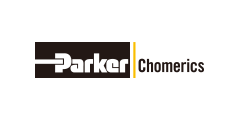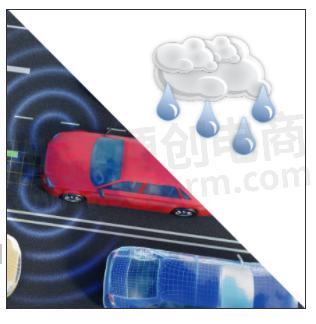Vehicle Connectivity Drives Demand for EMI Shielding with High IP Rating

The growing connected vehicle and electric car markets are currently driving up demand for IP-rated (Ingress Protection rating) and EMI protection. Even standard road vehicle electronics need to be increasingly protected environmentally and electrically.
Vehicle functionality is being taken over by sophisticated electronics and these systems need protection against EMI and environmental elements such as dust, dirt, and water to operate efficiently.
This trend is also seen in the defense industry and today more than 20% of vehicle designers (commercial and military) who approach Parker Chomerics, need a solution for both EMI and environmental protection.

What does IP rating mean?
The IP code, or Ingress Protection rating, is an international standard EN/IEC 60529 which is used to define the level of sealing effectiveness of an electrical enclosure or mechanical casing against intrusion from environmental elements. In addition, international standard ISO 20653 is used for IP degrees of protection specifically for road vehicles. Parker Chomerics offers a range of EMI shielding gaskets and seals that are being used to meet this growing IP rated environmental exposure demand.
Some of the most common IP ratings required by vehicle manufacturers include IP65, IP66, IP67 and IP69.
IP rating codes explained
The IP rating can be identified by the letters IP, followed by two numbers such as 65 (IP65). The first number refers to the amount of projection the enclosure has against a specific solid element, in this case ‘6’, indicates full protection against dust. The enclosure is dust tight. The second number defines the level of protection against liquids - see below.
IP65 – The enclosure is dust tight and protected against jets of water. Parker Chomerics CHO-SEAL® Co-Extruded gasket profiles LD55 and LH10, when used as elastomer gaskets in a groove, are an ideal solution.
IP66 – The enclosure is dust tight and protected against strong jets of water.
IP67 – The enclosure is dust tight and provides protection against temporary immersion for up to 30 minutes at depths between 15cm and 1 meter. Again, a CHO-SEAL® Co-Extruded gasket in a groove creates an effective all-round solution to this meet this requirement.
IP68 – Is not applicable in vehicle applications as it relates to protection against continuous immersion.
IP69 – The enclosure is dust tight and is protected against both high-pressure and high-temperature jets of water.
IP69K – Provides the same protection as IP69 but with additional resistance to wash-down and steam-cleaning procedures. This rating is most often seen in specific road vehicle applications.
As outlined above, there is similarity between EN/IEC 60529 and ISO 20653. The EN/IEC 60529 standard was updated to include the IPX9 water ingress test. This test is essentially identical to the IP69K test from ISO 20653. The “K” tests specify special requirements for road vehicles.
Design for IP requirements
The design engineer must consider any EMI shielding and environmental requirements at the conceptual stage of a project in order to protect and extend the lifetime of the electronic system. The customer would benefit from partnering with a reputable EMI shielding technology specialist such as Parker Chomerics, as EMI shielding and sealing materials can be developed and designed specifically for the customer's application.
With such a marked customer-driven trend, it is important to specify the optimum IP rating required for an EMI shielding gasket or seal. However, the rating depends very much on where the EMI shield will be located on the vehicle, and to what elements it will be exposed. For example, typical vehicle applications range from automotive control boxes through to a multitude of requirements in the engine and undercarriage, all which will be particularly demanding from an environmental perspective.
In an application such as a car door, the door itself will deflect most of the water pressure encountered during road use, with the rubber seal being secondary (jets of water will not come into direct contact with the gasket). However, this does not mean the seal is of secondary consideration. Elastomer gaskets with deflection characteristics, along with appropriate mechanical design factors, are recommended to meet IP69 and IP69K requirements.
Cost effective solutions
For applications where a cost-effective solution is required, a well sized – preferably 3mm solid O-section that is galvanically paired with the mating surface, would deliver protection against both EMI and water. Galvanic compatibility is vital in applications where the gasket might be in contact with a component such as an aluminum surface, as conductivity factors come into play and compatibility between metals must be ensured.
Aside from dust and water, there are many other factors to consider when specifying a suitable gasket/seal. For example, road vehicle applications could be exposed to extreme temperatures during the summer and winter months and in some applications, fire retardant and chemical resistant materials are required.
No matter how challenging, there is a solution for every application requiring EMI and environmental protection and by working closely with a specialist such as Parker Chomerics, customers can benefit from testing services that are application specific and in line with the customer requirements.
Other Parker Chomerics solutions widely used in road vehicle applications are CHO-FORM® Form-In-Place EMI Gaskets and THERM-A-GAPTM Thermal Interface Materials.
- +1 Like
- Add to Favorites
Recommend
- On the Cutting Edge: How Parker Chomerics Helps SpaceX Soar
- Sekorm Became an Authorized Distributor of Parker Chomerics
- 5.2W/m-K High Reliability, Fully Cured, Dispensable Thermal Gel from Parker Chomerics
- Advanced Battery Energy Storage Systems (BESS) Solutions: Parker Chomerics 6.0W/m-K THERM-A-FORM CIP 60
- PARKER CHOMERICS New Electrically Conductive Sealant CHO-BOND 1018 Offers Unique Combination: Galvanic Compatibility to Aluminium and Fluid/Fuel Resistance
- Parker Chomerics‘ THERM-A-GAP™ Gel 20 One-component Thermal Interface Material with 2.4W/m-k Thermal Conductivity Ideal for Automotive Industry Applications
- Parker Chomerics THERM-A-FORM CIP 60: 6.0W/m-K Dispensable Thermal Cure-in-Place and Gap Filler Material
- News | Thermal Interface Materials for Challenging Private Spaceflight Applications
This document is provided by Sekorm Platform for VIP exclusive service. The copyright is owned by Sekorm. Without authorization, any medias, websites or individual are not allowed to reprint. When authorizing the reprint, the link of www.sekorm.com must be indicated.





























































































































































































































































































































































































































































































































































































































































































































































































































































































